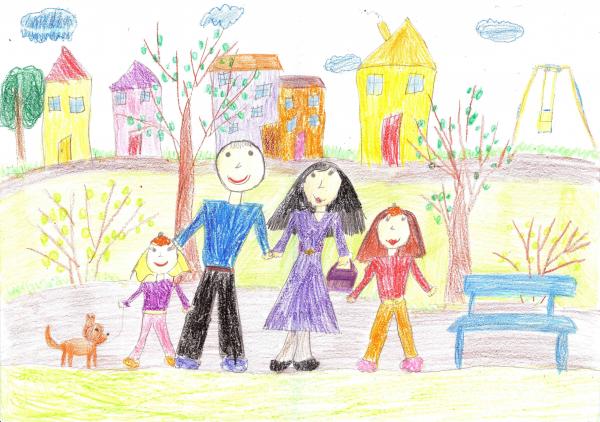
The key to understanding some of history's most complex issues may lie in the mind of a child.
It could even be found in children's drawings.
Researcher Karen Sanchez-Eppler, a professor of American Studies and English at Amherst College, explained in an essay that children may have a certain understanding about the world that adults don't. Specifically, children see the world in a new and fresh way, which can offer researchers a new perspective on how history can be viewed.
"What if we recognized children as having ways of speaking, thinking and interpreting that may possess valuable knowledge and insight?" Sanchez-Eppler wrote. "How might it change - or add - to the way we think of historical events and cultural trends, from the Civil War to the publication of 'Robinson Crusoe'? What would we discover if we tried to unpack 'childish things' from the rote assignments of school copybooks to the whimsy of children's drawings?"
Sanchez-Eppler further explained that simple diary or journal entries from children can give adult researchers insight into what family life was like during different periods of history.
She cites one 1827 diary entry from 8-year-old Mary Ware Allen, who wrote about how her mother played guitar when she studied geography on a snow day. To researchers, this would indicate that middle class families sometimes owned guitars and put an emphasis on education back at that time.
Researchers can also learn about how children perceive racism and culturalism based on the different books children read and the notes they make inside them.
Look no farther than the photo below. Drawn in 1964, this photo not only shows religion's prevalence in society, but also racial issues, which were a major cultural issue in the 1960s.
Photo credit: Library of Congress
This isn't limited to drawings, either. When children write their own stories, researchers can find what those youngsters valued most in society, like scientific advancements, she wrote.
"Children's perspectives - their play, their imaginings, their curiosity - invite us to see history with fresh eyes," Sanchez-Eppler wrote. "Paying attention to children can help us achieve a fuller and more intimate access to the past."
Sanchez-Eppler isn't the first researcher to suggest such an idea. The Waldorf Library, a project of the Research Institute of Waldorf Education, explained that children's drawings are one common way for different cultures to show expressions, as they are often filled with "hopes, wishes, dreams, visions, and expectations "� and also their anxieties, fears, hurts, and worries," which give researchers an idea of what certain cultures often think and worry about.
Photo credit: Library of Congress
Drawings can also be the key to understanding home life of any given era. In fact, a 2014 study found that children's drawings offer a glimpse into home life experiences. Children will draw themselves away from their parents when there's violence or chaos in the home, for example, and these children may also draw themselves with sad faces or expressions, the study said.
Researchers have been trying to gauge what children take away from certain historical moments by having them draw, too. This happened after Sept. 11, 2001, when psychologists had children draw their interpretations of the events to see how youngsters understood the terrorist attack, according to PBS.
Photo credit: Library of Congress
Photo credit: Library of Congress
Photo credit: Library of Congress
Photo credit: Library of Congress
Photo credit: Library of Congress
Photo credit: Library of Congress
These drawings showed a variety of interpretations, including one where dinosaurs and a pack of monsters attacked the twin towers. This was a way, researchers said, of getting children to "make sense of the unimaginable," PBS reported.
"Drawings are a real depiction of the moment," Lori Evans, a psychologist at the NYU Child Study Center, told PBS. "I think that sometimes we underestimate what kids see and hear. What these drawings tell us is that even young children had an understanding of what was going on."

